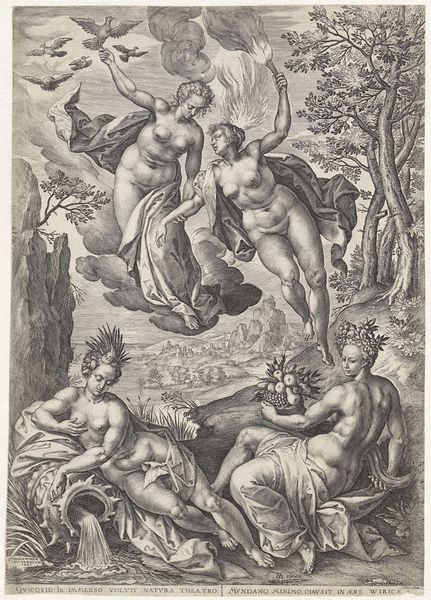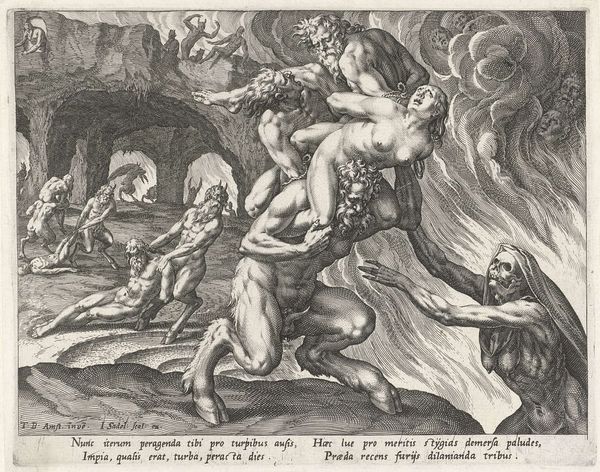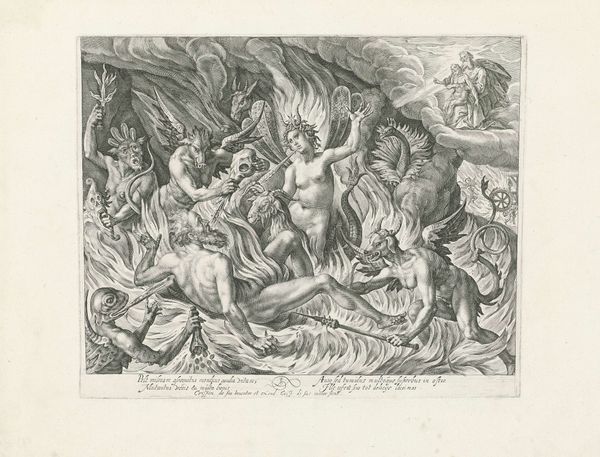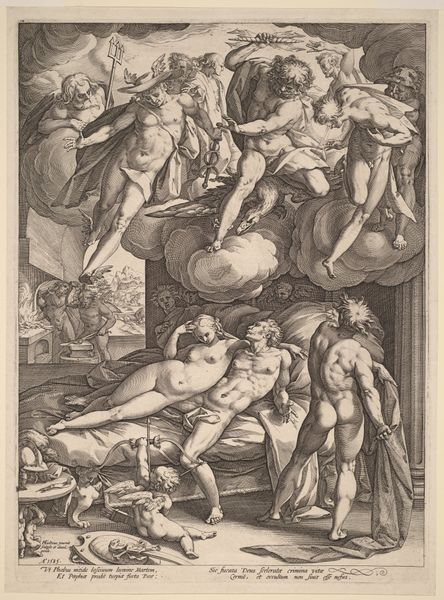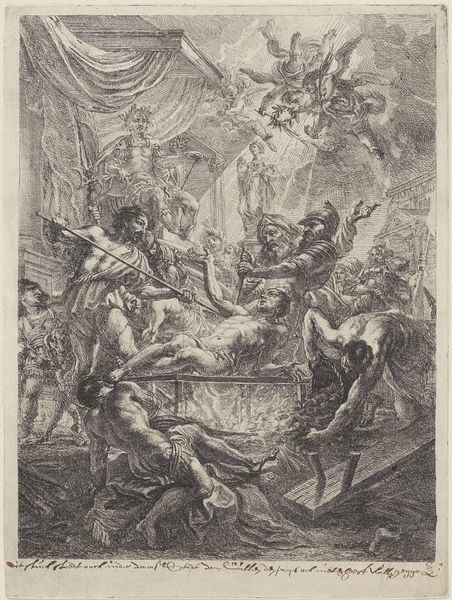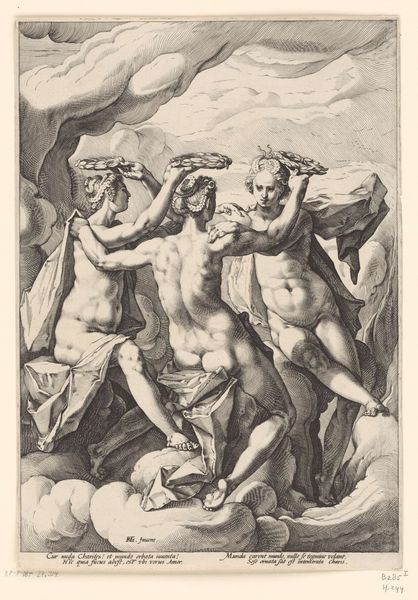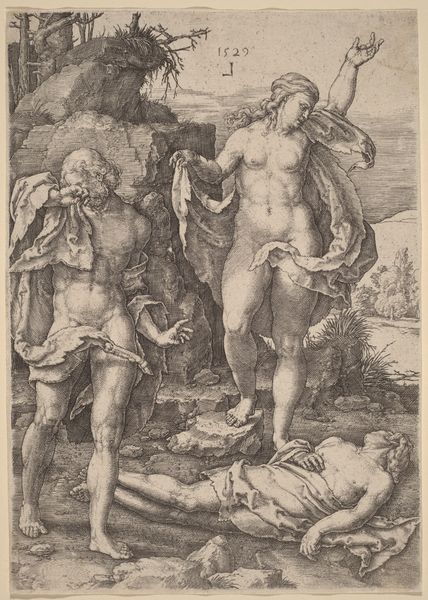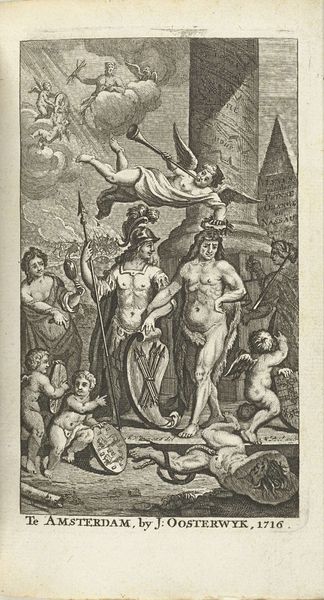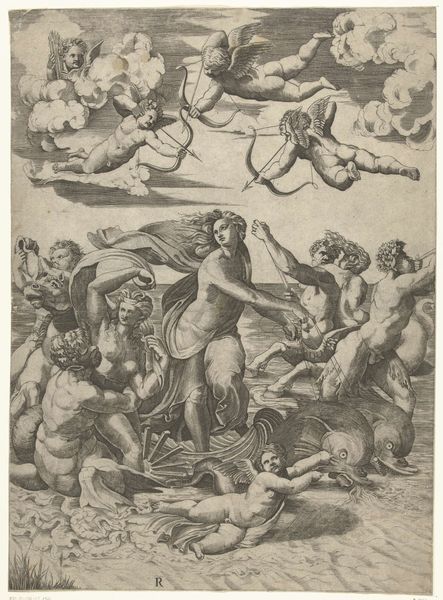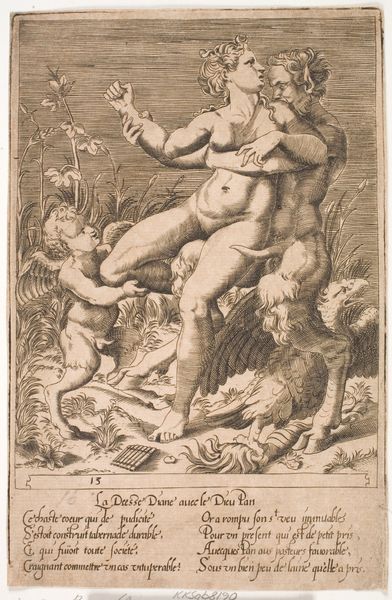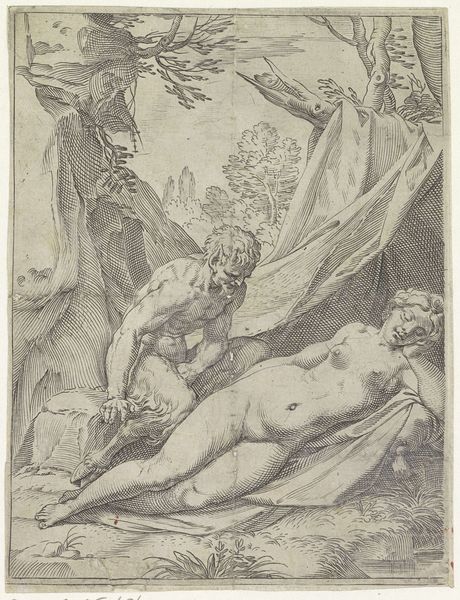
Dimensions: height 253 mm, width 198 mm
Copyright: Rijks Museum: Open Domain
Jan Ditmaer created this engraving, “Death of Adam and Eve,” around 1600 in the Netherlands. It's an allegorical image meant to convey theological truths about human destiny. We see the resurrected Christ standing triumphantly over the Devil. Adam and Eve lie beneath him, pierced by arrows shot by a winged Death. The image is a visual representation of salvation through Christ's sacrifice. The Netherlands at this time was undergoing significant religious conflict as the Reformation spread. Prints like this one served as propaganda tools, reinforcing specific religious viewpoints. By using accessible imagery, artists helped to shape popular understanding of complex theological concepts. This print demonstrates how art functioned as a visual language, reinforcing social norms and religious doctrines, in a time of immense change. We need to look at everything from the artist's biography, to the publishing houses of the time to fully understand the social role of this image.
Comments
No comments
Be the first to comment and join the conversation on the ultimate creative platform.
